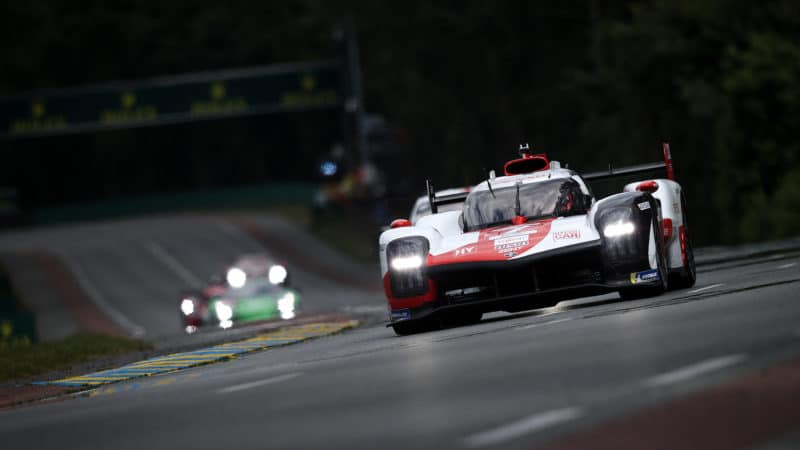Toyota may have secured the front row of the grid at Le Mans, despite nearly being usurped by Alpine when its drivers hit late lap traffic towards the end of the Hyperpole session, but reliability could well play a key role in converting that pole to a race win.
It is easy to think that current Le Mans cars are bulletproof, with catastrophic mechanical failures a rare occurrence these days, but Toyota had a battle on its hands in 2021 thanks to a fuel pickup issue that nearly cost it the win. That drama was only solved by some very creative thinking from the engineering team and mid-corner juggling of fuel pump controls by the drivers.
For 2022, that particular issue is well behind the team but the GR010 hasn’t had a trouble-free run this season. Toyota’s potential weak spot appears to lie with the hybrid system, issues with which sidelined the No8 car during the pre-Le Mans Spa round of the WEC.
John Litjens, project leader for WEC at Toyota at Le Mans, explained that the fault in Spa related to an internal failure within the DC-DC converter element of the hybrid and was traced to a batch issue. This is the component responsible for converting the voltage from the battery to that required by the front-mounted Motor Generator Unit and other ancillaries, and vice versa when the car regenerates energy under braking.
Notably, Spa was the second such hiccup the team has had with the converter: Litjens stated that a similar problem had cropped up in 2021. The Spa failure was quality control related and happened on a part with less than 50km of running time.
The GR010 can run at full power without any contribution from the MGU, and thanks to Balance of Performance changes which have seen the deployment speed for the Toyota’s upped to 190km/h (118mph), the performance loss (in dry running at least) would be minimal. “From a pure power point of view, we can run the car to the FIA mandated power curve. The electric motor fills in some holes but we can still run,” said Litjens.
However, because the issues to date have been related to the DC-DC, not the MGU, they cannot simply be ignored if they occur at Le Mans because they affect more than just the hybrid system.


